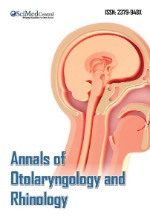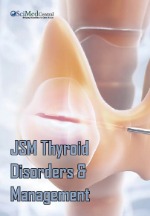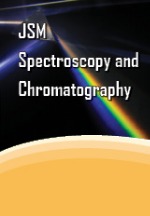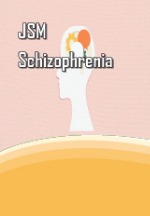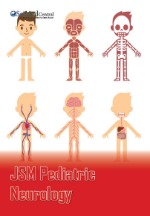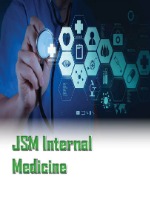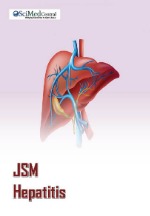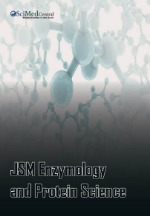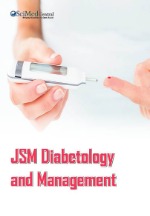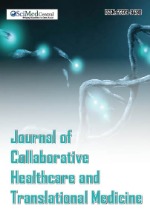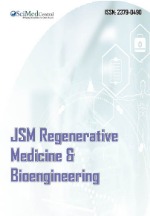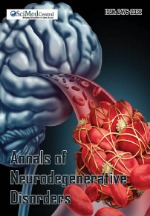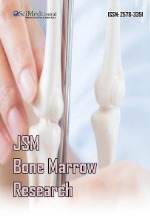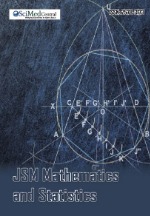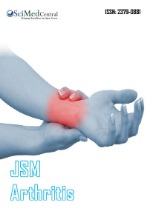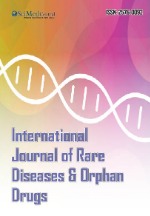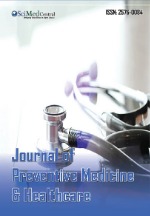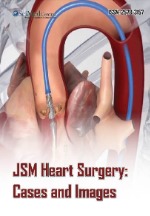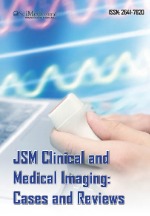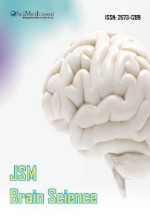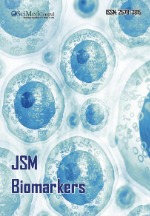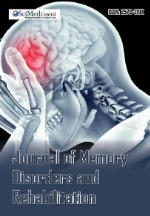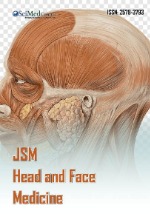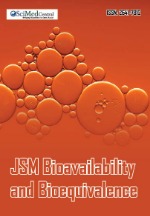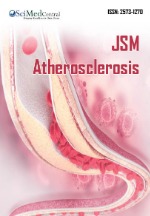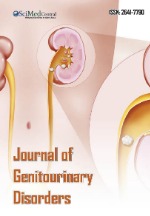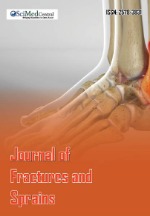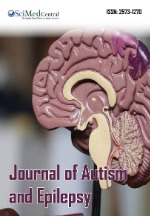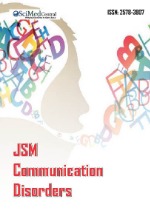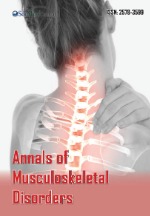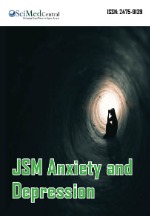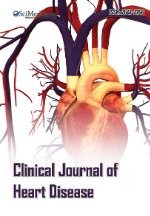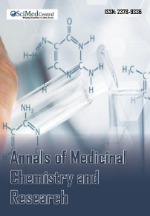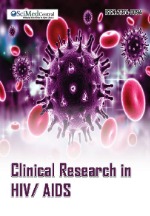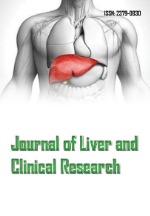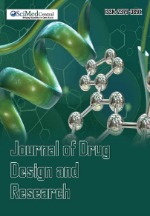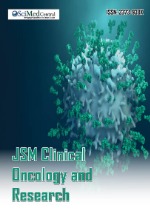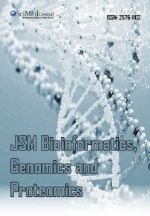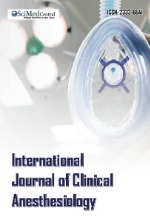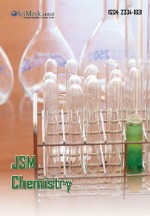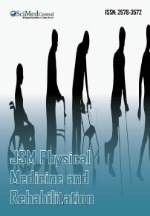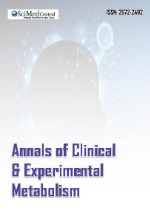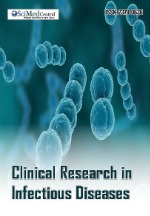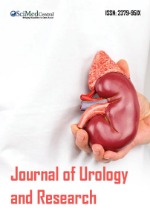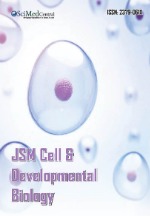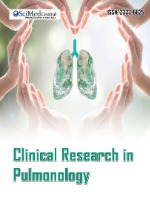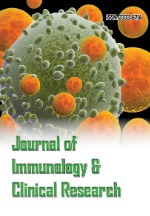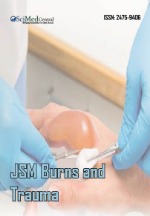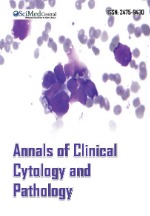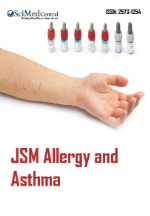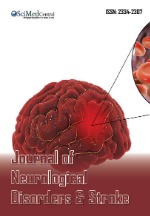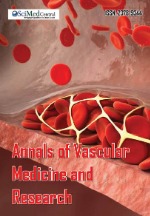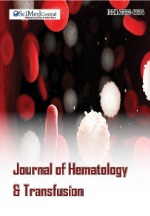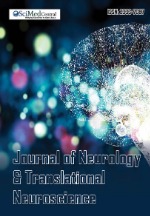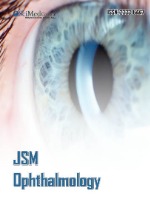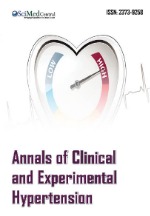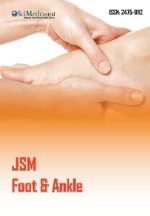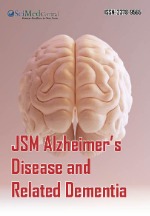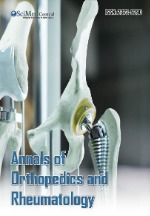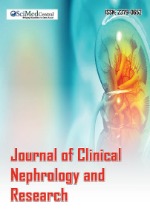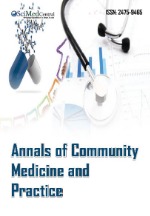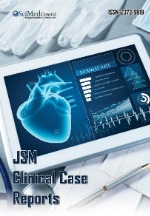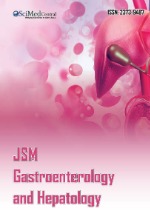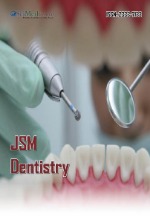Clinical Pharmacokinetics, Receptor Occupancy and Therapeutic Drug Monitoring for the Second and Third Generation Antipsychotics
- 1. Department of Neuroscience and Mental Health, Clinical Psychiatry, Clinical Psychopharmacology Unit, Italy
- 2. Department of Mental Health and Substance Use Disorders, ASST Lodi, Italy
Abstract
Therapeutic drug monitoring (TDM) studies are generally focused on keeping chronic drug exposure to minimal effective blood levels to better control compliance and to avoid side effects. The usefulness of TDM applied to new generation antipsychotics (NGAs) is still under discussion, especially in clinical settings, even though there are evidences in literature that TDM can improve efficacy, especially in non-responders or in patients developing side effects with sub-therapeutic doses. In addition, drug plasma level determinations can be of some utility in medical legal problems. Optimal plasma level ranges are proposed for clozapine, risperidone, paliperidone and olanzapine. The available data on quetiapine, amisulpride, asenapine, iloperidone and lurasidone provide only limited information, while there is no direct evidence concerning ziprasidone, aripiprazole, brexpiprazole, cariprazine and lumateperone.
CITATION
Carlo MM, Silvia P (2024) Clinical Pharmacokinetics, Receptor Occupancy and Therapeutic Drug Monitoring for the Second and Third Generation Antipsychotics. J Pharmacol Clin Toxicol 12(1):1185.
Keywords
• Therapeutic drug monitoring • Pharmacokinetics • Neuroleptics • Atypical antipsychotics • Drug plasma levels • Receptor occupancy
INTRODUCTION
Psychopharmacological treatment approaches still seem to rely on an “attempt and error” principle, inspired from empirical principles. Empiricism can cause failure of the pharmacological treatment and a break in the patient-physician relationship leading to reduced patient compliance. Moreover, many “drug-resistance” problems are just the results of empiric therapeutic strategy. And yet, through pharmacokinetic studies and subcellular neurochemical research, there have been a real progress in the rationalization of psychopharmacological treatments. Pharmacokinetic studies in psychopharmacology started with Brodie [1], in the early 60s. He assumed that clinical effects of a drug, both therapeutic and toxic, were more likely related to its plasma concentration than to the administered dose. The development of more and more sensitive analytical techniques, able to measure subnanongram quantities, has contributed to the progress of this research and, therefore, to confirm the original assumption in clinical practice.
Many clinical psychopharmacology studies are, therefore, based on determining drug plasma leves (PLs). These studies assume that PLs cannot be directly related to administered doses,resulting in a better prediction of brain levels (about 20 times higher in the brain than in the blood) [1].
Furthermore, monitoring PLs has contributed to our understanding of drug non-response by distinguishing “pseudo” drug resistance (characterized by low PLs due to greater metabolic activity or poor compliance) and “true” drug resistance (characterized by appropriate PLs in relation to the administered dose but poor receptor sensitivity) [2] .
The dose-effect relationships of several drugs vary considerably between patients, mainly due to pharmacokinetic differences influenced by age, changes in first-pass effect, or the induction or inhibition of the microsomal metabolic system [3,4]. Pharmacokinetic variability depends mainly on drug oxidation, a metabolic pathway (the catalytic cycle of cytochrome P450) whose activity varies widely among subjects because of environmental influences and genetic differences [3].
Metabolism, even though primarily regarded as part of the mechanism by which drugs are deactivated and excreted, may also lead to the formation of active metabolites whose activity may be similar or higher to that of the parent compound [4]. Metabolic
studies have shown that, in clinically managed pharmacological therapy, it is useful to determine the PLs of both the parent drug and its active metabolites (e.g. paliperidone, considered a new drug). Furthermore, the metabolic ratio (the ratio between the PLs of the metabolite and the parent compound) can be an indirect genetic indicator of the metabolic status of a subject and an index of a factor of pharmacoresistance that may be constitutional or acquired (e.g. due to enzyme inhibition or induction) [5].
Clinical pharmacokinetic studies can be grouped according to their approaches:
- Acute studies, for the definition of the compound’s kinetic profile;
- Short and long-term plasma level/clinical response relationship studies considering the therapeutic drug monitoring of patients (TDM);
- Metabolic studies considering the influence of metabolites on clinical response and side-effects.
The aim of acute pharmacokinetic studies is to define a compound’s kinetic profile (absorption, distribution, metabolism and elimination) after single and multiple doses, its main metabolic pathways, and the influence of the parent compound and metabolites on clinical response and side effects, as well as to determine the correlation between PLs and clinical response.
Therapeutic drug monitoring (TDM) can also be particularly useful when adjusting oral doses in order to achieve the best therapeutic result with the lowest risk of serious side effects and toxicity [3,6].
Preskorn [7], has summarized the pharmacodynamic and pharmacokinetic characteristics of a drug that predict the clinical usefulness of TDM: multiple mechanisms of action, the considerable interindividual variability of its human metabolism, a narrow therapeutic index, a delayed onset of action, and difficulties in detecting early toxicity.
TheinterdisciplinaryTDMgroupoftheArbeitsgemeinschaftfür Neuropsychopharmakologie und Pharmakopsychiatrie (AGNP) [8], and the American Society of Clinical Psychopharmacology (ASCP) [9], had proposed consensus guidelines to optimise the use of TDM for psychotropic drugs, including five research- based levels of recommendation with regard to the routine monitoring of PLs for the dose titration of most psychoactive drugs: (1) strongly recommended, (2) recommended, (3) useful,
(4) probably useful, and (5) not recommended. The authors also provide recommended therapeutic ranges based on validated and well-structured clinical studies or, in the absence of studies of therapeutic ranges, on the PLs normally observed at therapeutic doses [7,8]. Similar therapeutic ranges are reported by the Maudsley Prescribing Guidelines in Psychiatry. In particular, the authors indicate uncertainty regarding quetiapine range PLs and recommend no TDM for risperidone and paliperidone [10] (Table 1).
Table 1: Recommended therapeutic range plasma levels, laboratory alert PL and levels of recommendation (Joint Consensus Statement of the American Society of Clinical Psychopharmacology, the Therapeutic Drug Monitoring Task Force, AGNP, 2017/18 - 2020 and The Maudsley Guidelines, 2018 [8-10].
|
Antipsychotic Drug & Active Metabolites |
Therapeutic Range Plasma Levels (Pls) (ng/ml) |
Alert Level (ng/ml) |
Tdm Level of Recommendation (1-4) |
|
Amisulpride |
100-320 *200–320 *20–60 (elderly) |
640 |
1 |
|
Aripiprazole (ARI) |
100-350 |
1000 |
2 |
|
ARI + dehydroARI |
150-500 *150–210 |
|
|
|
Asenapine |
1-5 |
10 |
4 |
|
Brexpiprazole |
40-140 |
280 |
3 |
|
Cariprazine |
§10-20 5-15 |
40 |
3 |
|
Clozapine |
350-600 *350–500 (upper limit is ill defined) |
1000 |
1 |
|
Iloperidone |
5-10 |
20 |
3 |
|
Lurasidone |
15-40 |
120 |
3 |
|
Olanzapine |
20-80 *20–40 ng/ml |
100 |
1 |
|
Paliperidone |
20-60 |
120 |
2 |
|
(9-hydroxyRSP) |
*20–60 |
|
*TDM not recommended |
|
Quetiapine(QTP) |
100-500 |
1000 |
2 |
|
N-desalkil QTP |
100-250 *Around 50–100 ? |
|
|
|
Risperidone (RSP) |
20- 60 |
120 |
2 |
|
+ 9-hydroxyRSP (active moiety) |
*20–60 |
|
*TDM not recommended |
|
Sertindole |
50-100 |
200 |
2 |
|
Sulpiride |
200-1000 |
1000 |
2 |
|
|
|
|
*Lower PLs in elderly |
|
Ziprasidone |
50-200 |
400 |
2 |
|
Zotepine |
10-150 |
300 |
3 |
Level of recommendation use of Therapeutic Drug Monitoring (TDM): Level 1: Strongly recommended
Level 2: Recommended
Level 3: Useful
Level 4: Potentially useful.
Modified by Hiemke et al., 2018: Consensus Guidelines for Therapeutic Drug Monitoring in Neuropsychopharmacology (AGNP), update 2017 [8] (§ only) and modified by Schoretsanitis et al., 2020 [9] , Joint Consensus Statement of the American Society of Clinical Psychopharmacology and AGNP
* Modified by Taylor et al 2018: The Maudsley Prescribing Guidelines in Psychiatry,
13th Edition, [10]
TDM studies can generally be divided on the basis of the duration of treatment into short- (2-8 weeks), medium- (3-12 months) and long-term studies (more than 1 year).
The rate of metabolism and consequently drug PLs are influenced by the activity of hepatic microsomal enzymes. Genetically determined differences in enzyme activity can lead to large interindividual variability in drug PLs. Aging is an additional factor for substantial variability in drug metabolism. Authors report different interindividual PLs after the administration of the same dose for several drugs, with a 20-fold difference in PLs for chlorpromazine to 3-7 fold for antidepressants. In addition, both antidepressant and antipsychotic drugs may have active metabolites.
PLs of drug metabolites as high as or higher than that of the parent compound have been observed after oral administration of several classical neuroleptics and new antipsychotics, such as chlorpromazine, haloperidol or cariprazine. Their pharmacological activities and PLs in humans suggest that drug metabolites can contribute to the therapeutic effects of the parent compounds, despite a lack of correlation between plasma concentration and clinical efficacy in plasma level/clinical response relationship studies. Clinical studies on metabolite activity are often neglected.
Moreover, metabolic studies have revealed the importance of the ratios between metabolites and parent drug PLs. This ratio can be considered an index of metabolic activity in single subjects.
It may be expected that the contribution from the metabolites to the effects of psychotropic drugs are different from patient to patient, due to pharmacokinetic and perhaps also pharmacodynamic variations.
Moreover, it seems valuable to also consider the concentrations of such metabolites in addition to that of the parent compound in plasma concentration/clinical response studies to better evaluate the correlation between PLs and therapeutic/toxic response.
The aim of this review is to update the data relating to the pharmacokinetics of the new generation antipsychotics, term which have substituted that of classical neuroleptic, with regard to the association between drug PLs and clinical response.
METHODS
Data sources
Clinical trial information was accessed by on-line query of the websites http://www.pubmed.gov, http://www.fda.gov, http://www.accessdata.fda.gov/scripts/,cder/drugsatfda,http://www.ema.europa.eu/ema/and http://www.clinicaltrials. gov on July 2022 for the search term ‘antipsychotics, ‘atypical antipsychotics, ‘second generation antipsychotics and PLs - PLs’, ‘pharmacokinetics’, clinical pharmacokinetics of –the name of antipsychotic’, ‘plasma level monitoring’, ’therapeutic drug monitoring’ -the name of single antipsychotic. No date or language constraints were utilised. The reference lists from available documents were also used to identify additional information sources. Information was also extracted from the product labelling.
Inclusion of studies was based mainly on the methods section of the trials. When available, large, well controlled trials with appropriate statistical methodology were preferred. Relevant pharmacodynamic and pharmacokinetic data are also included.
CLOZAPINE
Clozapine (CLZ), belonging to the chemical class of dibenzodiazepines, still has great relevance today among atypical antipsychotics.
It has been suggested that monitoring plasma CLZ concentrations might be useful in clinical management, but the actual plasma CLZ window remains debated [11-14].
Pharmacokinetics
Acute pharmacokinetic data showed a wide interindividual range with mean half-lives ranging from 9.1 to 17.4 h [15]. Time to peak plasma concentration was between 1.1 and 3.6 hours, plasma clearance between 8.7 and 53.3 L/h, and distribution volume between 1.6 and 7.3 L/kg [15]. Steady-state PLs are reached after 7-10 days of dosing.
Plasma concentrations, receptor occupancy and clinical response
PLs determination of CLZ is useful when poor compliance is suspected and for patients with impaired pharmacokinetics, such as those characterized by ultra-rapid CYP1A2 activity, leading to low plasma CLZ levels and non-response or co-administration of a potent CYP1A2 inhibitor (eg fluvoxamine) [16,17]. The high interindividual and intraindividual variability of plasma CLZ levels confirm the usefulness of their monitoring [16].
According to the consensus guidelines of the ASCP and AGNP Expert Group [8,9], TDM is strongly recommended for patients treated with CLZ (level of recommendation 1) and a recommended therapeutic range of 350-600 ng / ml is proposed.
Dose adjustment in women may also be reasonable based on sex-related differences in serum concentrations [17].
PET studies [18], confirm that CLZ is atypical regarding the degree of D2 receptor occupation, which could explain the lack of extrapyramidal side effects. The combination of relatively high D1 , low D2 and very high 5-HT2 receptor occupancy rates is exclusive to CLZ
CLZ Pls were not unequivocally shown to predict clinical effects and the concentration did not predict the degree of receptor occupation in the brain. Therefore, careful clinical titration cannot be replaced by TDM to optimizing CLZ treatment [18].
Furthermore, binding studies have shown that concentrations capable of blocking 75% of dopamine D4 receptors correspond to therapeutic concentrations [19]. Other studies suggested that inherited variants of D4 may explain some of the interindividual variations observed in patients’ response to CLZ [20].
CLZ/NDMC (N desmethylclozapine) ratio was a predictor of cognitive performance, especially executive functioning [21]. Lower CLZ/NDMC ratios are associated with improved executive functioning in clinically stable patients. These results could be interpreted by the different pharmacodynamic properties on the cholinergic, dopaminergic and serotonergic systems of NDMC compared to CLZ.
CLOZAPINE
Clozapine (CLZ), belonging to the chemical class of dibenzodiazepines, still has great relevance today among atypical antipsychotics.
It has been suggested that monitoring plasma CLZ concentrations might be useful in clinical management, but the actual plasma CLZ window remains debated [11-14].
Pharmacokinetics
Acute pharmacokinetic data showed a wide interindividual range with mean half-lives ranging from 9.1 to 17.4 h [15]. Time to peak plasma concentration was between 1.1 and 3.6 hours, plasma clearance between 8.7 and 53.3 L/h, and distribution volume between 1.6 and 7.3 L/kg [15]. Steady-state PLs are reached after 7-10 days of dosing.
Plasma concentrations, receptor occupancy and clinical response
PLs determination of CLZ is useful when poor compliance is suspected and for patients with impaired pharmacokinetics, such as those characterized by ultra-rapid CYP1A2 activity, leading to low plasma CLZ levels and non-response or co-administration of a potent CYP1A2 inhibitor (eg fluvoxamine) [16,17]. The high interindividual and intraindividual variability of plasma CLZ levels confirm the usefulness of their monitoring [16].
According to the consensus guidelines of the ASCP and AGNP Expert Group [8,9], TDM is strongly recommended for patients treated with CLZ (level of recommendation 1) and a recommended therapeutic range of 350-600 ng / ml is proposed.
Dose adjustment in women may also be reasonable based on sex-related differences in serum concentrations [17].
PET studies [18], confirm that CLZ is atypical regarding the degree of D2 receptor occupation, which could explain the lack of extrapyramidal side effects. The combination of relatively high D1 , low D2 and very high 5-HT2 receptor occupancy rates is exclusive to CLZ
CLZ Pls were not unequivocally shown to predict clinical effects and the concentration did not predict the degree of receptor occupation in the brain. Therefore, careful clinical titration cannot be replaced by TDM to optimizing CLZ treatment [18].
Furthermore, binding studies have shown that concentrations capable of blocking 75% of dopamine D4 receptors correspond to therapeutic concentrations [19]. Other studies suggested that inherited variants of D4 may explain some of the interindividual variations observed in patients’ response to CLZ [20].
CLZ/NDMC (N desmethylclozapine) ratio was a predictor of cognitive performance, especially executive functioning [21]. Lower CLZ/NDMC ratios are associated with improved executive functioning in clinically stable patients. These results could be interpreted by the different pharmacodynamic properties on the cholinergic, dopaminergic and serotonergic systems of NDMC compared to CLZ.
RISPERIDONE
RSP is a derivative of benzisoxazole and has a strong binding affinity for the D2 receptors of serotonin (5-HT2a and 5-HT7 ) and dopamine (its affinity for the D3 and D4 receptors is three times lower), with a 5HT2A / D2 affinity ratio of about 20 [22,23].
Pharmacokinetics
RSP is rapidly absorbed after oral administration and maximum plasma concentration is reached in approximately one hour. It mainly undergoes 9-hydroxylation in the liver which produces the active metabolite 9-hydroxy-risperidone (9-OHRSP, which corresponds to paliperidone), a stage catalysed mainly by CYP2D6 and, to a lesser extent, by CYP3A4 [24]. Since the pharmacological properties of 9-OH-RSP are similar to those of RSP, both are considered capable of contributing to the overall antipsychotic effects and therefore represent “the active part” [24]. For this reason the relationship between RSP and 9-OH-RSP may play a crucial role in mediating the clinical effect [25,26].
Genetic influences, such as CYP2D6 status, play an important role in the variability of its pharmacokinetic parameters [27,28]. The mean half-life of RSP is three hours in extensive metabolisers (the majority of the population) and 22 hours in poor metabolisers. The mean half-life of the “active fraction” (RSP and its main metabolite) is almost constant at about 22 hours in both groups [22]. Steady state levels are reached within five days of treatment [22]. Large intra and interindividual variations in PLs of both RSP and 9-OH-RSP have been observed [29]. There is a weak relationship between daily dose and plasma RSP concentrations, but a close relationship with 9-OH-RSP concentrations and those of the total active fraction [29], but other Authors did not found any relationship [30,31].
Risperidone microsphere (Long-Acting Injectable Risperidone)
RSP is the first atypical antipsychotic agent to be available in a Intramuscular depot formulation (or long-acting injectable (LAI RSP).
PLs of free RSP increase gradually, peak after about five weeks, and are detectable for up to seven weeks after a single intramuscular injection [30].
Pharmacokinetics
LAI RSP showed a lower than expected peak plasma level (46 vs 62 ng / ml) and a lower than expected degree of fluctuation between Cmax and Cmin (53 vs 145%). The pharmacokinetic profile of LAI RSP administered every two weeks guarantees the maintenance of the steady state [32,33].
In some patients who had previously received oral RSP, switching to the LAI formulation resulted in a mean increase in the C / D ratio of 33% (range 12% -68%). The data indicate that there are large interindividual differences in the extent to which the daily dose must be reduced when switching from oral to intramuscular administration to achieve the same serum concentrations of the active fraction [34]. Since the dose adjustment required by individual patients cannot yet be predicted, TDM may be useful.
Plasma concentrations, receptor occupancy and clinical response
Gefvert et al. [35], studied the relationship between brain D2 receptor occupation and LAI RSP in schizophrenic patients two weeks after the third and fifth injection. Injections of 25, 50 and 75 mg, respectively, resulted in D2 receptor occupancy rates of 25-48%, 59-83%, and 62-72%, and active PLs of 4.4-8.8, 15.0- 31.1, and 22.5-26.3 ng / ml. The results indicate that steady-state brain D2 receptor occupancy after LAI RSP injections is within the range observed in patients effectively treated with 2-6 mg of oral RSP [35].
A PET study suggested a suitable initial dose of 4 mg of RSP for antipsychotic effect with a minimal risk of extrapyramidal side effects based on measurements of dopamine D2 and serotonin 5-HT2A receptor occupancy. At the 6-mg/day dose, mean D2 receptor occupancy was 82% and 5-HT2A receptor occupancy was 95%. After dose reduction to 3 mg/day, D2 receptor occupancy was 72% and 5-HT2A receptor occupancy was 83% [36].
After a treatment of 3 years with LAI RSP (25-50 mg), the active moiety significantly increased from 22.9 to 31.8 ng/ml and estimated dopamine D2 receptor occupancy numerically increased from 63.0 to 69.0 %. Paradoxically, the increased plasma concentration was found to be associated with a significant worsening of the clinical outcome [37].
Some authors have reported a negative correlation between clinical responses and the PLs of the active moiety [38], conflicting with previously published data [34,39]. This discrepancy may be due to the large variability in plasma drug levels and the lack of studies using fixed dosages. No therapeutic plasma level range for RSP has yet been clearly established. The plasma threshold for parkinsonian side effects has been found to be of 74 ng/ml [34,35]. Some data suggest that the normal range is between 15 and 60 ng/ml, but this need to be confirmed [34,36,39].
According to the consensus guidelines of the ASCP and AGNP Expert Group consensus guidelines [8,9], RSP TDM is recommended (level 2), because there are suggested therapeutic ranges obtained from PLs at therapeutically effective doses. The proposed plasma RSP concentration range is 20-60 ng/ml (Table 1). TDM is not recommended by the he Maudsley Guidelines [10].
Moreover, RSP TDM should be particularly useful when medication is switched from the oral to the depot form, or vice versa [8].
PALIPERIDONE
Paliperidone (PLP) belongs to the class of benzisoxazole derivatives. PLP is the major active metabolite of RSP (OH-RSP).
PLP is marketed as an extended-release (ER) formulation and is approved for the treatment of schizophrenia, schizoaffective disorder, either as monotherapy or as an adjunct to mood stabilizers and / or antidepressants [40,41].
Pharmacokinetics
PLP is formulated using an osmotic controlled release system, which reduces peak to trough changes in PLs and eliminates the need for dose titration [42].
PLP ER is minimally metabolised and therefore has a clinically significant lower potential for interactions with drugs that are metabolised by CYP450. For this reason, no dose adjustment of PLP ER is required in patients with mild to moderate hepatic insufficiency [42]. While PLP ER can be taken without regard to meals, the presence of food may increase its exposure [43].
Tmax for 6 mg ER PLP was approximately 24 hours (range, 23.1-29.0 hours) [44].
PLP ER demonstrates linear kinetics within the recommended clinical dose range (3-12 mg/day). A peak to low change of 38% was reported for paliperidone 12 mg, a much lower fluctuation index than that reported for paliperidone or immediate-release (IR) risperidone. The absolute bioavailability of ER PLP is 28%, compared to 106% of the IR formulation. This lower bioavailability is probably the effect of the PLP ER oral osmotic release system which releases PLP ER mainly in the colon, where absorption is lower [44].
The half-life of PLP ER is approximately 23 hours with steady state concentration reached in 4-5 days. PLP ER is widely and rapidly distributed after oral administration. It is 74% bound to proteins, mainly albumin and α1 acid glycoprotein. PLP ER undergoes very limited hepatic metabolism, with approximately 60% of the unchanged drug excreted by the kidney and 11% unchanged in the faeces.
Plasma concentrations, receptor occupancy and clinical response
PET data in a 6-week dose-finding study of ER PLP in male patients with schizophrenia showed that ER PLP at 6-9 mg / day resulted in estimated dopamine D2 receptor occupancy between 70 and 80% in the striatum and temporal cortex [45]. There were no significant differences in PLs of PLP and in dopamine D2 receptor occupancy between the striatum and temporal cortex at any dose [43,45].
One multicenter retrospective analysis examined the relationship between PLP serum concentrations and clinical effects. Intra-individual variability in trough serum concentrations was also analyzed in patients under treatment with either the PLP ER formulation or the RSP immediate-release formulation: PLs were associated with clinical response [46]. Among patients receiving PLP as antipsychotic monotherapy and who showed at least a much improved level the PLP concentrations were 20–52 ng/ml. These were similar to the recommended therapeutic range of 20–60 ng/ml for RSP plus 9-hydroxy-risperidone (active moiety) [46]. Authors concluded that RSP and PLP have a similar therapeutic range and similar intra-individual variability in terms of trough serum levels [46].
According to the consensus guidelines of the ASCP and AGNP Expert Group consensus guidelines [8,9], PLP TDM is recommended (recommendation level 2) but not by the Maudsley Guidelines, 2018 [8-10] (Table 1).
PALIPERIDONE PALMITATE (LONG-ACTING INJECTABLE PALIPERIDONE)
Paliperidone palmitate (PLP LAI) is the long-acting injectable (LAI) formulation of the oral antipsychotic PLP ER for the treatment of schizophrenia.
PLP palmitate is an ester in an aqueous-based nanosuspension. It has very low water solubility [47].
Pharmacokinetics
Following the administration of a single intramuscular dose, Cmax was achieved in a median time of 13 days. Relative to injection into the gluteal muscle, intramuscular administration of single-dose PLP LAI 25-150 mg in the deltoid muscle resulted, on average, in a 28% higher Cmax [48].
PLP is not extensively metabolized in the liver. Although results of a study suggest that cytochrome P450 (CYP) 2D6 and CYP3A4 might play a role in metabolizing PLP, there is no evidence that it has a significant role. The median apparent elimination half-life of intramuscular PLP LAI over a dose range of 25–150 mg is 25-49 days [48].
Plasma concentrations and clinical response
In a prospective observational study of 1 year with PLP LAI, PLP mean oral dosage was 8,13 mg and first injection mean dosage was 138,09 mg. PLP PLs ranged from 7,0 to 67,2 ng/ml, showing an initial decrease without clinical consequences and then a significant progressive increase to reach steady state at the fifth month (mean 17,46 ng/ml at first month vs 29,64 ng/ml at fifth month) [49].
In 2015 a 3-month PLP palmitate (PPM-3) extended-release injectable suspension and in 2021 a 6-month PLP palmitate (only twice-yearly injectable) were approved by FDA[50,51].
Because of its low solubility in water, PLP palmitate dissolves slowly once injected before being hydrolyzed as paliperidone and absorbed into the bloodstream. From time of release on day 1, PPM-3 is reported to remain active for as long 18 months [50-52].
PPM-3 reaches a maximum plasma concentration between 23-34 days and apparent half-life was ≈ 2-4 months. In clinical trials, PPM-3 had a median half-life of 84 to 95 days when injected into the deltoid muscle and a median half-life of 118 to 139 days when injected into the gluteal muscle [51].
In the study by Mauri et al. (2022) [53], a clinically significant decline of plasma level was observed, from a mean of 33 ng / mL to 24 ng / mL, which is a 27% reduction from PLP1M to PLP3M. This reduction might mean that the conversion ratio for an equivalent dose of PP3M by PP1M, needs to be re-evaluated. It also could mean that patients, when on PP1M, were administered more than they needed and could afford a dose reduction without reduction of effectiveness. It should be considered that PLs can drop during the shift to PP3M but they should stay greater than 20 ng/ml, an indicative value of clinical efficacy showed by lower PLs [53].
This has been a common experience throughout the LAI literature, starting by fluphenazine to haloperidol decanoates: patients develop lower levels when converted to the LAI and still do well, or even better than when on the oral formulation.
QUETIAPINE
Quetiapine (QTP) is a dibenzothiazepine derivate approved by FDA for the management of schizophrenia, manic episodes, acute treatment of bipolar depression and maintenance treatment of bipolar disorder adjuncted to lithium or divalproex [69].
Pharmacokinetics
QTP is rapidly absorbed following the oral administration with a time to Tmax of 1-1.5 hours [70]. Apparent oral clearance ranges from 55 to 87 L/h, and Cmax values of 53-117 ng/ml were observed after the single administration of a 25 mg dose [70]. Multiple dose studies show Cmax values of 778-1080 ng/ml at doses of 250 mg/day. QTP is widely distributed and the apparent oral volume of distribution ranges from 513 to 710 L (10L/kg). The primary route of elimination is hepatic metabolism [71].
Some studies have shown a dose-dependent increase in plasma QTP levels [72,73], but this has not always been found to be statistically significant [74].
Of the eleven metabolites resulting from the hepatic metabolism, only two (7-hydroxy-QTP and 7-hydroxy-N- desalkyl-QTP, norquetiapine, NQTP) are pharmacologically active [75]. The mean elimination half-lives for QTP and NQTP are ≈ 6-7 hours and ≈ 12 hours.
Less than 5% of a single QTP dose is excreted as unchanged drug, with ≈ 73% recovered in the urine and ≈ 21% recovered in the faeces [76].
The mean plasma clearance of QTP is reduced by only 25% in patients with severe renal impairment [76]. The oral clearance of QTP seems to be lower (30-50%) in elderly patients [77]. QTP does not show any clinically relevant gender-related pharmacokinetic changes [77] but Mauri et al. [71], found higher levels/doses per kg in women than men.
The co-administration of drugs inducing CYP3A4 may lead to a clinically relevant decrease in QTP PLs. This is the case of phenytoin and carbamazepine [76]. Ketoconazole, an inhibitor of CYP3A4, increases QTP PLs and decreases its clearance [77].
QUETIAPINE EXTENDED RELEASE (XR)
The extended-release (XR) formulation of QTP (QTP XR) was developed to provide more useful once-daily administration.
Pharmacokinetics
The pharmacokinetics of QTP XR is linear and proportional to dose across the dosage range of 400–800mg/day. The Tmax for QTP XR is longer than that of QTP IR (≈ 5 vs ≈ 2 hours), consistent with the slower drug release characteristics of the QTP XR. However, total daily exposure does not differ with once- daily QTP XR and twice-daily QTP IR at equivalent total daily doses [78]. Steady-state PLs were achieved within 4 days for both formulations [79], and are expected to be reached within 2 days. Increases in Cmax of up to 50% may occur when QTP XR is administered with a high-fat meal: the administration of QTP XR without food is recommended [80].
Plasma concentrations, receptor occupancy and clinical response
Only a few studies have investigated the relationship between QTP PLs and clinical responses, all of which are short-term, and none have used a treatment period of more than six weeks. Although some studies [71,79], argue in favor of the existence of a relationship between plasma QTP levels and clinical responses other Authors have failed to identify an optimal therapeutic range [78].
Some evidence can be extrapolated from PET studies.
A number of studies have investigated the relationship between the time-course of CNS dopamine and serotonin receptor blockade and drug PLs after the discontinuation of QTP treatment, and shown that the disappearance of QTP from plasma is much more rapid than the decrease in serotonin receptor occupancy [77,79]. A better correspondence between D2 receptor dissociation and plasma QTP half-life was observed. These data indicate a discrepancy between the time-course of receptor occupancy and plasma QTP concentrations [79]. Kapur et al. [73], found a clear curvilinear relationship between 5-HT2a receptor occupancy and QTP PLs, but only a weak relationship between QTP PLs and D2 receptor occupancy.
On the other hand Gevfert et al. [80], found an apparently clear correlation between QTP PLs and D2 receptor occupancy suggesting a certain threshold plasma level and definite D2 occupancy is required for the efficacy of treatment.
A suggested therapeutic range of 100-500 ng/ml has been proposed the consensus guidelines of the ASCP and AGNP Expert Group consensus guidelines [89], and this suggested range represents PLs at therapeutically effective doses obtained from steady-state pharmacokinetic studies [70,73,74]. TDM is therefore recommended (level 2) (Table 1).
AMISULPRIDE
Amisulpride (AMI) has been approved for the treatment of
schizophrenia [81].
AMI is a substituted benzamide derivative, and highly selective dopamine D2 and D3 receptor antagonist. It has also demonstrated preferential affinity for presynaptic D2 and D3 receptors at low doses (<50 mg/day), leading to enhanced dopamine transmission, whereas higher doses antagonize postsynaptic D2 and D3 receptors [82].
Pharmacokinetics
AMI is rapidly absorbed and has an absolute bioavailability of 50%. Cmax is reached in 1-4 hours (Tmax) with steady state reached after 2-3 days. Its plasma elimination half-life is 12 hours,
with renal clearance of 17-20 L/h [83]. Excretion occurs mainly via the kidneys, with 22-25% of an oral dose being recovered in the urine as unchanged drug. In patients with renal impairment, the drug’s half-life is unchanged but systemic clearance is reduced by one-third and so dose adjustments are required [83].
AMI is unlikely to interact with other drugs and does not affect the activity of the cytochrome P450 system [83].
Age and gender have a significant effect on dose-corrected AMI PLs, which are higher in older patients and women [84], possibly because of a gender difference in the drug’s renal clearance. Co-medication with lithium and CLZ increases dose- corrected AMI PLs [84].
Plasma concentrations, receptor occupancy and clinical response
A PET study in schizophrenic patients measured the striatal occupancy by AMI and correlated it with the corresponding drug PLs. All the patients received a daily dose of 200-1200 mg for at least 2 weeks. Occupancy values and PLs were nonlinearly fitted to an Emax model (a nonlinear model used in dose-response analyses evaluating the maximum effect attributable to a drug). Results showed 43–85% (putamen) and 67–90% (caudate) D2- like receptor occupancy. AMI Pls at the time of tracer injection, but not administered doses, were significantly nonlinearly correlated to occupancy levels. Calculated PLs to attain 60–80% receptor occupancy ranged from 119 to 474 ng/ml (caudate) and from 241 to 732 ng/ml (putamen). This showed a broad range of PLs producing less than 80% striatal receptor occupancy [85].
Little is known about the therapeutic clinical significance of AMI PLs in schizophrenia. Only one study has considered the range of therapeutic plasma AMI levels, and the correlation between daily oral doses and Pls. An average daily dose of 772
+ 347 (SD) mg/day corresponded at a mean plasma level of 424
± 293 (SD) ng/ml. There was a positive correlation between the daily AMI dose and Pls. The study considered optimal therapeutic AMI PLs of about 367 ng/ml [84].
This result support the therapeutic range of 100-320 ng/ml proposedbytheconsensusguidelinesofthe ASCPand AGNP Expert Group consensus guidelines [8]. Their TDM recommendation level is 1 (“strongly recommended”), as monitoring plasma AMI levels may minimise side effects. Maudsley Guidelines [10], suggest lower levels in the elderly (Table 1).
ZIPRASIDONE
Ziprasidone (ZPS) is a benzothiazolylpiperazine developed from the chemically related antipsychotic tiospirone, and it has been reported to be effective in the treatment of schizophrenia [86]. It is a dopamine D2 and serotonin 5-HT2A receptor antagonist [87,88].
Pharmacokinetics
The absolute bioavailability of a 20 mg oral dose of ZPS under fed conditions is 60%. The duration and extent of ZPS absorption may be as much as doubled in the presence of food, whereas its half-life is shorter than under fasting conditions. ZPS has a mean apparent distribution volume of 1.5 L/kg [89]. Its pharmacokinetics seems to be linear. As both AUC and Cmax linearly increase with increasing doses [89], and its half-life has been reported to be 8-10 hours [90]. Age and gender do not have a clinically significant influence on the pharmacokinetics of ZPS [91].
ZPS is strongly metabolized in humans, with less than 5% of the administered dose being excreted in unchanged form. ZPS is a weak inhibitor of CYP2D6 [92].
Plasma concentrations, receptor occupancy and clinical response
A study on healthy volunteers found that ZPS PLs were dose dependent [89], but no such relationship was found in a clinical sample [93,94]. Clinical studies have shown mean PLs of 35-109 ng/ml at the doses commonly used in clinical settings (80-160 mg/die), with steady state being reached by the seventh day [94].
There are no data on the relationships between ZPS PLs and clinical responses showing that the optimal therapeutic range is still poorly defined.
Mamo et al. [95], found some indirect evidence supporting such a relationship in a PET study in schizophrenic or schizoaffective patients who received ZPS 40, 80, 120 or 160 mg/ day for three weeks. There was a significant positive correlation between plasma ZPS levels and the occupancy of both D2 and 5-HT2 receptors with the relationship described by a hyperbolic curve.
According to the consensus guidelines of the ASCP and AGNP Expert Group [8,9], TDM is “recommended” (level 2) (Table 1).
ARIPIPRAZOLE
Aripiprazole (ARI) is the progenitor of the third-generation antipsychotics. It is indicated in the treatment of schizophrenia, acute treatment of manic and mixed episodes associated with Bipolar I, adjunctive treatment of Major Depressive Disorder. It is also indicated in the treatment of Tourette’s Disorder, irritability associated with Autistic Disorder, agitation associated with schizophrenia and bipolar mania [96].
ARI is a quinolinone derivative, and the first of a new class of atypical antipsychotics: as it has partial agonist activity on dopamine D2 and serotonin 5-HT1a receptors, and also antagonizes 5-HT2a receptors, is considered a “dopamine-serotonin stabilizer” [96,97].
Pharmacokinetics
ARI is well absorbed, with peak PLs occurring within 3-5 hours of administration. The mean elimination half-life is
approximately 75 hours for ARI and 94 hours for its active metabolite with a steady-state reached by day 14 [98]. A linear pharmacokinetic profile was observed at all doses ranging from 5 to 30 mg/day [98,99].
Metabolism takes place in the liver via CYP3A4 and CYP2D6. At steady-state, about 40% of the plasma ARI level is represented by the major metabolite, dehydroARI.
Excretion occurs via the kidney and liver, with 25% of the dose being recovered in the urine (<1% unchanged) and 55% in the feces (18% unchanged) [98,99]. According to the manufacturer, no dose adjustments are required on the grounds of hepatic or renal impairment, age, gender, race or smoking status [100-102].
Aripiprazole Depot Formulation (Long-Acting Injectable Aripiprazole)
ARI is available in 2 chemically different (aripiprazole monohydrate and aripiprazole lauroxil and pharmaceutically different LAI formulations (aripiprazole once-monthly 400 mg and aripiprazole lauroxil (1064 mg every 2 months).
Aripiprazole once-monthly 400 mg: pharmacokinetics
ARI LAI is a lyophilized powder of unmodified ARI, which is reconstituted in sterile water prior to intramuscular injection. Due to the low solubility of ARI particles, after intramuscular injection, ARI is slowly absorbed into the systemic circulation, with the mean absorption half-life of ARI LAI of 28 days [100]. Maximum plasma ARI concentrations (Cmax) are reached in approximately 5-7days [101,102].
Steady-state ARI concentrations were reached by the fourth once-monthly dose. After five doses, mean steady-state plasma Cmin and Cmax concentrations were 156 and 269 ng/ ml, respectively, with the 300 mg dose, and 212 and 316 ng/ ml, respectively, with the 400 mg dose [103]. These levels correspond well to a suggested target also of oral therapeutic range of 150- 300 ng/ml for optimizing efficacy while minimizing adverse events [104].
In the multiple dose study, the mean terminal-phase elimination half-life was 29.9 days with the 300 mg dose and 46.5 days with the 400 mg dose [103], presumably due to absorption rate limited kinetics.
Plasma concentrations, receptor occupancy and clinical response
A PET study in schizophrenic patients showed a mean dopamine D2/D3 receptor occupancy was high in all brain regions investigated, with no binding difference across brain regions. The D2/D3 receptors were completely saturated when serum ARI concentration exceeded 100–150 ng/ml. The mean concentration in the large clinical patient sample was 228 ng/ml [105,106].
A review on PET analyses suggest that there are significant relationships between dopamine receptor occupancy and both ARI dose and blood concentration. Dopamine receptor occupancy appears to reach a plateau at doses above 10 mg supporting the observation found in dose-response studies that 10 mg/day is the optimal dose for ARI. Authors concluded that the dose range for ARI is well defined, and it reliably predicts plasma level, dopamine receptor occupancy, and clinical response. Plasma level variation appears to have minimal impact on clinical response, but it may predict some adverse effects. Authors suggested a putative target plasma level range of between 150 and 210 ng/ml [106].
Kirschbaum et al. [107], measured clinical effects and ARI and dehydroARI serum levels in psychiatric patients treated at a mean doses of 20 mg/day. Serum levels correlated significantly with the dose. Mean concentrations of the active metabolite dehydroARI amounted to 40% of the parent compound.
Comedication with CYP3A4 and CYP2D6 inducers or inhibitors changed serum levels up to 51% [104]. Authors reported the best improvement with serum levels between 150 and 300 ng/ ml. No or only mild side effects were detected in patients, with ARI PLs between 110 and 249 ng/ml [104]. Since serum levels of ARI and dehydroARI were highly variable, Authors suggested the utility of TDM. According to the consensus guidelines of the ASCP and AGNP Expert Group consensus guidelines [8,9], ARI TDM is recommended (level 2) indicating a therapeutic range between 150 and 350 ng/ml (Table 1).
ASENAPINE
Asenapine (ASN), available as an orally disintegrating tablet [108,109]. ASN is the only drug requiring sublingual administration because its bioavailability in sublingual form is 35%, but its bioavailability decreases to less than 2% when it is swallowed in tablet form [110].
The FDA added ASN as a treatment option for schizophrenia for adults and as monotherapy or add-on therapy with lithium or valproate in the treatment of manic or mixed episodes associated with bipolar I disorder. it is also indicated in the European Union for the treatment of moderate to severe manic episodes associated with bipolar I disorder [108,109].
Pharmacokinetics
ASN is rapidly absorbed. Absolute bioavailability is 35% and Tmax is 0.5 to 1.5h. Cmax of ASN after oral administration of 5 mg in 8 healthy male volunteers was 3.76-ng/ml ± 1.18 SD [109]. Product informations reported the average peak PLs at steady state of 5 and 10 mg twice daily of 3.6 ng/ml and 7.0 ng/ml re- spectively [111].
Steady-state concentrations are reached within 3 days of twice-daily dosing. Food or water may decrease ASN exposure. Vd is approximately 20 to 25 L/kg; 95% bound to plasma proteins [111].
ASN is metabolized in the liver by direct glucuronidation by UGT1A4 and by oxidative metabolism by CYP-450 isoenzymes (predominantly CYP1A2). Elimination is 50% in urine and 40% in feces. The mean terminal half-life is approximately 24 h [112].
Pharmacokinetics are similar in patients with varying degrees of renal impairment compared with healthy patients. Severe hepatic impairment exposure was 7 times higher than in healthy patients. In elderly patients ASN Cl is decreased, increasing exposure by 30% to 40% [112,113].
Plasma concentrations and clinical response
Data are lacking also for the technical difficulties for plasma level determination of the drug. According to the consensus guidelines of the ASCP and AGNP Expert Group [8,9], ASN TDM is potentially useful (recommendation level 4) indicating a therapeutic range of 1-5 ng/ml (Table 1).
LURASIDONE
Chemically, lurasidone (LRS) is structurally related to perospirone and ziprasidone and other benzisothiazoles including the benzisoxazole derivatives risperidone, its active metabolite paliperidone, and iloperidone.
LRS has high affinity for the dopamine D2 and 5-HT2A receptors. However, it has the highest affinity of any atypical antipsychotic for the 5-HT7 receptor and its potent 5-HT7 receptor antagonism, might be beneficial for mood and cognition [114,115].
Pharmacokinetics
LRS is rapidly absorbed, reaching maximum concentrations within 1.5-3 hours (tmax) after single and multiple oral doses. Its pharmacokinetics were linear over the range of 20 to 160 mg in healthy and schizophrenic subjects, but interindividual variability was high (30%-60%) in terms of maximum PLs (Cmax) and area under the curve (AUC). Absorption increased when the drug was taken with food, in fact AUC and Cmax increased two or three times. LRS is highly bound to human plasma albumin and alpha- 1-glycoprotein (99%) [114-116].
Elimination is essentially by metabolism, primarily involving CYP3A4. The two main metabolites, have negligible affinity for the D2 receptors and 5-HT1A, 5-HT2A, and 5-HT7 receptors [116].
The mean terminal half-life at steady state in patients with schizophrenia ranges 28.8 and 37.4 hours. Some data report an elimination half-life of approximately 18 hours. Thus, after repeated oral doses in schizophrenic patients, steady-state concentrations of LRS were achieved within 7 days [116,117].
Of clinical relevance is LRS’s route of metabolism through cytochrome P450 (CYP) 3A4. LRS use is contraindicated in the presence of strong inducers and inhibitors of CYP3A4 (such as rifampin and ketoconazole, respectively) [116,117]. In the presence of moderate inhibitors of CYP3A4, the recommended starting dose of LRS is 20 mg/day, and the highest recommended dose under these circumstances is 80 mg/day [116].
Plasma concentrations, receptor occupancy and clinical response
Potkin et al. [118], reported that the total LRS serum concentration should be greater than 70 ng/ml in order to achieve a 65% occupancy level in the caudate, putamen, and nucleus accumbens. Estimates of the serum concentration to achieve similar occupancy were lower for the amygdala and thalamus and higher for the globus pallidus. In contrast to the significant correlations between serum LRS concentrations and occupancy, there were no significant correlation between lurasidone dose and occupancy at Tmax.
Following LRS administration, lower PANSS positive scores were associated with higher D2 occupancy for the caudate, putamen, globus pallidus, thalamus, and amygdala (negative correlations). Thalamus and amygdala occupancy showed a significant correlation with positive symptom improvement. There were no regions with significant correlations for D2 receptor occupancy with either the PANSS negative subscale totals post-lurasidone or the PANSS negative change scores. Similarly, there were no significant correlations of D2 receptor occupancy with either the Extrapyramidal Symptom Rating Scale [118].
Regarding the relationship between ASP concentrations and clinical response the ASCP and AGNP Expert Groupt consensus guidelines [8,9], reports that ASP TDM is potentially useful (recommendation level 3) indicating a therapeutic range of 15- 40 ng/ml (Table 1).
ILOPERIDONE
The FDA approved Iloperidone (ILP) for the acute treatment of schizophrenia [119,120]. It is a new benzisoxazole atypical an- tipsychotic drug: ILP shows high affinity for dopamine D3 recep- tors, 5HT2A receptors, norepinephrine α1 receptors and an inter- mediate to high affinity for norepinephrine α2C receptors [120].
Pharmacokinetics
Iloperidone is well absorbed orally, with a bioavailability of 96%. Peak plasma concentration (Cmax) of ILP is reached 2-4 hours after oral administration [121].
A human pharmacokinetic study after oral administration of ILP 4 mg in 12 healthy Chinese volunteers, reported the Cmax value of 3.24 ng/ml ± 1.97 (SD) for ILP, and the Cmax value of the two active metabolites P88 and P95 of 5.78 ng/ml ± 2.98 (SD) and 6.25 ng/ml ± 1.89 (SD) respectively [122].
The elimination half-life of ILP ranges from 18 hours for extensive metabolisers of cytochrome P450 2D6 (CYP2D6) to 33 hours for poor metabolisers. It is metabolised in the liver by the enzymatic pathways CYP3A4 and CYP2D6 and circulates 95% bound to serum proteins. ILP has two major metabolites: P88-8991 (P88) and P95-12113 (P95). P88-8991 shares similar receptor binding affinities with the parent compound. P95- 12113 shows a lower affinity for the 5HT2A receptor, does not cross the blood brain barrier and therefore does not contribute to the clinical effects of ILP [121-123].
Plasma concentrations and clinical response
Data available on plasma level monitoring are lacking.
A study of Weiden et al. (2016) [124], report their previous data indicating a therapeutic range of 5-8 ng/ml for an oral dosage of 12-24 ng/ml.
In any case according to the consensus guidelines of the ASCP and AGNP Expert Group consensus guidelines [8,9], ILP TDM is useful (level 3) indicating a therapeutic range of 5-10 ng/ml (Table 1).
CARIPRAZINE
Cariprazine (CRP), a third generation antipsychotic, has been FDA-approved in 2015 for the treatment of schizophrenia including acute exacerbation phases and for the treatment of manic episodes in bipolar disorder [125].
CRP is a dopamine D2- and D3-receptor partial agonist, with higher affinity for D3 receptors, as opposed to the D2 antagonism of older antipsychotic agents [125,126]. Serotonin 5-HT1A partial agonism, a property CRP also shares with ARI and LRS, is also thought to possibly benefit negative symptoms, cognitive deficits [125-128].
Pharmacokinetics
CRP reaches peak plasma concentration between 3 and 4 hours after oral dosing in healthy subjects. Food marginally delayed the absorption of CRP, but did not affect the extent of its absorption after a single 2 mg oral dose.
Its pharmacokinetics were linear in terms of area under the concentration–time curve (AUC) but maximum concentrations were more than proportional within the single dose range from
0.5 to 2.5 mg in healthy subjects. Mean half-life was 2–5 days (1.5–12.5 mg/day) in the subjects with schizophrenia [125,128].
CRP is then primarily cleared by hepatic metabolism, as are most lipophilic antipsychotics.
CRP is metabolized by cytochrome P450 3A4 and, to a lesser extent, by cytochrome P450 2D6.
There are two active metabolites of note: desmethyl-CRP (DCRP) and didesmethyl-CRP (DDCRP): CRP activity is thought to be mediated by CRP itself and its two major active metabolites, which are pharmacologically equipotent to maternal drug [129,130].
Steady state was achieved within the dosing duration of 3 weeks for CRP and DCRP [130].
The half-lives based on time to reach steady state, estimated from the mean concentration-time curves, are 2 to 4 days for CRP, and approximately 1 to 3 weeks for DDCRP. The time to reach steady state for the major active metabolite DDCRP was variable across patients, with some patients not achieving steady state at the end of the 12th week. Additionally the mean concentrations of DCRP and DDCRP were approximately 30% and 400% in the patients, respectively, of CRP concentrations by the end of 12 weeks of treatment [131].
Plasma concentrations and clinical response
Prescribing information of pharmaceutical company after 12-weeks of treatment with 6 mg/day of CRP showed PLs at steady state ranging from 10 to 22.7 ng/ml [131].
Periclou et al. [132], demonstrated that typical steady-state PLs after 3 and 4.5 mg/day were associated with 50% of maximum typical reductions in PANSS and YMRS total scores, respectively. Time-weighted CRP exposures had significant relationships with the probability of common adverse events. Dose increase was associated with increased efficacy but was also associated with an increase in adverse events [132].
According to the consensus guidelines of the ASCP and AGNP Expert Group [8,9], CRP TDM is potentially useful (level 3) indicating a therapeutic range of 5-15 ng/ml (Table 1).
BREXPIPRAZOLE
Brexpiprazole (BRXP), a third generation antipsychotic, is a serotonin-dopamine activity modulator indicated in schizophrenia, as adjunctive treatment in major depressive disorder (FDA approval, 2015) and potentially in Alzheimer’s disease and post-traumatic stress disorder [133,134].
Efficacy of BRXP may be mediated through a combination of partial agonist activity at serotonin 5-HT1A and dopamine D2 receptors, and antagonist activity at serotonin 5-HT2A receptors [135-137].
Pharmacokinetics
Following single dose administration, peak PLs of BRXP occurred within 4 hours of administration. Steady-state BRXP concentrations were achieved within 10-12 days of dosing. It can be administered with or without food. Following once-daily single and multiple dose administration, exposure to BRXP (Cmax and AUC) increased in proportion to the administered dose [138].
Volume of distribution of BRXP after intravenous administration is high (1.56 ± 0.42 L / kg), indicating extravascular distribution. BRXP is highly bound to plasma proteins and its protein binding is not affected by renal or hepatic insufficiency [138].
BRXP is metabolized primarily by CYP3A4 and CYP2D6 enzymes. Its major metabolite, DM-3411 is considered not to contribute to the therapeutic effects [137].
Following a single oral dose of [14C]-labeled BRXP, approximately 25% and 46% of the administered radioactivity was recovered in the urine and feces, respectively. After multiple once daily administration of BRXP, the terminal elimination half-lives of BRXP and DM-3411, were 91 hours and 86 hours, respectively [137].
Compared with patients with normal renal or hepatic function, BRXP exposure is increased in patients with moderate
to severe renal impairment (creatinine clearance\60 mL/min) or moderate to severe hepatic impairment (Child-Pugh score C7). The metabolism of BRXP is induced by CYP3A4 and CYP2D6 inducers, while it is reduced by CYP3A4 and CYP2D6 inhibitors.
In a clinical trial in major depression disorder patients, the pharmacokinetics of oral adjunctive BRXP ≤ 3 mg once daily for 14 days was generally similar in elderly (aged 70–85 years) and younger adults [136].
Plasma concentrations, receptor occupancy and clinical response
PET data on healthy volunteers demonstrated mean D2/ D3 receptor occupancy in the putamen and caudate nucleus increased with BRXP dose, leveled out at 77-88% with BRXP 5 mg and 6 mg at 4 h post-dose, and remained at a similar level at 23.5 h post-dose (74–83%). Estimates of maximum obtainable receptor occupancy (Omax) were 89.2% for the putamen and 95.4% for the caudate nucleus; PLs predicted to provide 50% of Omax were
8.13 ng/ml and 7.75 ng/mm, respectively. By extrapolating the observed single-dose D2/D3 receptor occupancy data, Authors reported that multiple doses of BRXP 2 mg/day and above are expected to result in an efficacious BRXP concentration, consistent with clinically active doses in schizophrenia [139].
BRXP demonstrated in patients with schizophrenia binding to D2 receptors and 5-HT2A receptors at steady state after 10 days of daily administration in a dose dependent manner, while binding to D3, 5-HT1A receptors and serotonin transporter were not detectable with the radiotracers used for these targets [139].
Following a multiple oral administration, the Cmax and AUC 24h of BRXP and its metabolite DM-3411 increased in a dose- dependent manner. These results showed dose-proportionality for Cmax and AUC 24h of BRXP. Moreover the Cmax and AUC 24h of BRXP showed accumulation of about 2.5- to 5.5 fold on day 14, compared with those on day 1[136-139].
According to the consensus guidelines of the ASCP and AGNP Expert Group [8,9], BRXP TDM is potentially useful (recommendation level 3) indicating a therapeutic range of 40- 140 ng/ml (Table 1).
LUMATEPERONE
Lumateperone (lumateperone tosylate, also known as ITI- 007) (LMTP) is a third generation antipsychotic, approved by the FDA for the treatment of schizophrenia and for depressive episodes associated with bipolar I or II disorder (bipolar depression) in adults, as monotherapy and as adjunctive therapy with lithium or valproate.
It has an original mechanism of action because it is a first- in-class selective and simultaneous modulator of serotonin, dopamine and glutamate neurotransmission [140].
Pharmacokinetics
LMTP is absorbed rapidly, with a bioavailability of 4.4%, and is 97.4% protein bound. After once-daily oral administration of LMTP, Cmax is reached in approximately 1 to 2 hours with a mean Tmax of 3 to 4 hours. Steady state is achieved in about 5 days, and the half-life is 13 to 21 hours.
It is extensively metabolised with> 20 metabolites identified in vivo. After oral administration of LMTP, three pharmacologically active metabolites were formed, IC200131, IC200161 and IC200565, which represent approximately 18% of the total circulating radioactivity (IC200161 = 1.3%, IC200131 = 9.4% and IC200565 = 5.3 %).
For patients concomitantly taking a CYP3A4 inducer (eg, carbamazepine), it is recommended to avoid the use of LMTP. In addition, coadministration of LMTP with moderate or strong CYP3A4 inhibitors (eg, fluvoxamine) should be avoided. Also, medications that are known inhibitors of the UGT enzyme (eg, valproic acid) should be concomitantly used with LMTP cautiously [140,141].
Plasma concentrations, receptor occupancy and clinical response
There are no studies on the relationship between plasma LMTP concentrations and clinical response or side effects.The highest PLs associated with 60 mg of LMTP have been reported to occur 1-3 h post dose. PLs of the parent and IC200161 were slightly higher at 1 h (18.3 ng / mL and 15.8 ng / mL, respectively) compared to 3 h (14.9 ng / mL and 12.7 ng / mL, respectively) whereas the plasma level of IC200131 was greater at 3 h (23.8 ng / ml) compared to 1 h (13.9 ng / ml).
Combining the data from the ten subjects evaluated with 60 mg ITI-007 at 1 h or 3 h, the mean Dopamine D2 receptor occupancy (D2RO) was 37% and was associated with a mean total plasma level of 49.3 ng/ml (parent plus the two active metabolites) with a statistically significant correlation between D2RO and total PLs. If the data from the time course assessment at
7.5 and 24–27 h are added to the analysis, the occupancy and the PLs decrease with time and the correlation between D2RO and total plasma level is even more robust [142].
LMTP (10 mg) demonstrated high occupancy (>80 %) of cortical 5-HT2A receptors and low occupancy of striatal D2 receptors (~12 %). D2 receptor occupancy increased with dose and significantly correlated with PLs [142].
Across multiple-dose studies in patients with schizophrenia, at steady state, LMTP (42 mg on Day 1 and 84 mg on Days 2-8) showed a mean Cmax of 61.0 ng/ml.
At a dose regime of 42 mg on day 1 and 84 mg on days 2-8 of LMTP, Cmax values for all the three metabolites IC200131, IC200161 and IC200565 were 66.4, 28.4 and 32.5 ng/mL respectively. There is an approximately dose proportional increase in LMTP and its metabolite concentrations without considerable accumulation on day 5 indicating a positive relationship between LMTP dose and PLs [143].
CONCLUSIONS
Antipsychotic PLs are a valuable yet under estimated tool in several clinical conditions in which psychotic patients are currently managed largely on the basis of error-prone information. Lacking objective information, prescribers are less likely to identify the correct cause of complicated courses of antipsychotic treatment and make the correct treatment decision. Prescribers may prematurely discontinue a promising drug instead of instituting pro-adherence interventions or dosage changes aimed at optimizing the treatment or making it more tolerable. Improving decision making through greater access to antipsychotic plasma level information has the potential to have a significant impact on quality of care and outcomes of patients with schizophrenia.
On the other hand, it is important to underline that TDM is not strictly necessary for all the new antipsychotic drugs because there are no unequivocal data supporting a relationship between plasma drug levels and clinical outcomes or side effects. A demonstrated exception is represented by the concentration- dependent pro-convulsant effects of CLZ that make TDM highly recommended in order to avoid overdosing, as stated by the AGNP-TDM consensus guidelines [8]. Similarly, TDM is recommended in order to establish the optimal tolerability of OLZ and RSP.
In addition, there are no clinical pharmacokinetic data, in particular long-term data, concerning other atypical antipsychotics, and this will require future research. It must be remembered that optimal plasma level ranges for CLZ, RSP and OLZ are proposed by some authors, but not all. Studies of QTP and AMI provide limited information, and there are no direct data for ZPS, ARI, ASN and the other new antipsychotics. However, there are a few reported investigations that need to be confirmed and extended.
Anyway, drug plasma level determination (TDM) can be considered of considerable help in optimising treatment and assuring adherence to the therapy particularly in schizophrenia where insights are poor or null.
As also reported by several guidelines, some needful criteria for clinician should be satisfied:
The assay must be clinically validated and results available within a clinically useful timescale.
PLs are usually meaningful only when samples are taken after steady-state levels have been achieved. This takes 4-5 drug half- lives. A clear exception to this advice is suspected overdose.
The sample for drug plasma level determination should be taken 12 hours post dose.
Sampling time is less critical with drugs with a long half-life (e.g. OLZ, ARI) but, as an absolute minimum, prescribers should always record the time of sampling and time of last dose. The only exception to this is if toxicity is suspected and sampling at the time of suspected toxicity is obviously appropriate.
PLs show an high individual and interindividual variability for the same oral dosage. Only an acceptable target range of PLs will usefully guide dosing. If there is not an accepted target range, PLs can only indicate adherence or potential toxicity.
Target ranges might have their limitations: patients may respond to lower levels than the quoted range and tolerate levels above the range; also, ranges quoted by different laboratories vary sometimes widely, often without explanation.
It is to be considered that plasma level ranges of new antipsychotics have been evaluated only for schizophrenia or psychotic symptoms: reliable ranges for depressive symptomatology has not been evaluated yet.
Plasma level optimal ranges after long acting injections can be lower than those necessary after oral treatments but data are lacking. In any case, plasma level determination after shifting from antipsychotic oral dosage to corresponding long-acting injection can be clinically useful to adjust the dosage of LAI.
Therefore, plasma level determination can be considered valid to confirm compliance, when toxicity or intolerance is suspected, when a pharmacokinetic drug interaction is suspected, when a target range of PLs has been established and if the drug has a narrow therapeutic index [144,145].
In addition, it is necessary to consider the heuristic value of plasma level determination of a new drug, and its medico-legal importance in the case of intoxication.
Moreover, TDM is a powerful tool that allows tailor- made treatment for the specific needs of individual patients identifying “pseudo-pharmacoresistance” problems such as poor compliance, high individual levels of metabolism, excessive water consumption by patients, excessive smoking, drug abuse, as well as the appearance of unpredictable side effects and possible drug interactions.
REFERENCES
- Brodie BB. Displacement of one drug by another from carrier or receptor sites. Proc R Soc Med. 1965; 58: 946-955.
- McCutcheon R, Beck K, D’Ambrosio E, Donocik J, Gobjila C, Jauhar S, et al. Antipsychotic PL in the assessment of poor treatment response in schizophrenia. Acta Psychiatr Scand. 2018; 137: 39-46.
- Buur-Rasmussen B, Brosen K. Cytochrome P450 and therapeutic drug monitoring with respect to clozapine. Eur Neuropsychopharmacol. 1999; 9: 453-459.
- Prior TI, Chue PS, Tibbo P, Baker GB. Drug metabolism and atypical antipsychotics. Eur Neuropsychopharmacol. 1999; 9: 301-309.
- Mauri MC, Volonteri L, Dell’Osso B, Regispani F, Papa P, Baldi ML, et al. Predictors of Clinical Outcome in Schizophrenic Patients Responding to Clozapine. J Clin Psychopharmacol. 2003; 23: 660-664.
- Steen NE, Aas M, Simonsen C, Dieset I, Tesli M, Nerhus M, et al. Serum levels of second-generation antipsychotics are associated with cognitive function in psychotic disorders. World J Biol Psychiatry. 2017; 18: 471- 482.
- reskorn SH. Therapeutic Drug Monitoring (TDM) in psychiatry(part I): why studies attempting to correlate drug concentration and antidepressant response don’t work. 2014; 20: 133-137.
- Hiemke C, Clement HW, Conca A, Deckert J, Domschke K, et al. Consensus Guidelines for Therapeutic Drug Monitoring in Neuropsychopharmacology: Update 2017. Pharmacopsychiatry. 2018; 51: 9-62.
- Schoretsanitis G, Kane JM, Correll CU, Marder SR, Citrome L, Newcomer JW, et al. Blood Levels to Optimize Antipsychotic Treatment in Clinical Practice: A Joint Consensus Statement of the American Society of Clinical Psychopharmacology and the Therapeutic Drug Monitoring Task Force of the Arbeitsgemeinschaft für Neuropsychopharmakologie und Pharmakopsychiatrie. J Clin Psychiatry. 2020; 81: 1913-1969
- Taylor DM, Barnes TRE, Young AH. Plasma level monitoring of psychotropic drugs. Pharmacokinetics, Chapter 11. In: The Maudsley Prescribing Guidelines in Psychiatry, Chichester, West Sussex UK, John Wiley & Sons Ltd, 13th Edition, 2018; 731-741
- Freeman DJ, Oyewumi LK. Will routine therapeutic drug monitoring have a place in clozapine therapy? Clin Pharmacokinet. 1997; 32: 95- 100.
- Khan AY, Preskorn SH. Examining concentration-dependence toxicity of clozapine: role of therapeutic drug monitoring. J Psychiat Pract. 2005; 11: 289-301.
- Volpicelli SA, Centorrino F, Puopolo PR, Kando J, Frankenburg FR, Baldessarrini RJ, Flood JG. Determination of clozapine, norclozapine and clozapine-N-oxide in serum by liquid chromatography. Clin Chem. 1993; 39: 1656-1659.
- Palego L, Biondi L, Giannaccini G, Sarno N, Elmi S, Ciapparelli A, et al. Clozapine, norclozapine plasma levels, their sum and ratio in 50 psychotic patients. Influence of patient-related veriables. Prog Neuropsychopharmacol Biol Psychiatry. 2002; 26: 473-480.
- Jann MW, Grimsley SR, Gray EC, Chang WH. Pharmacokinetics and pharmacodynamics of clozapine. Clin Pharmacokinetic. 1993; 24: 161-176.
- Schulte P. What is an adequate trial with clozapine? Therapeutic drug monitoring and time to response in treatment-refractory schizophrenia. Clin Pharmacokinet. 2003; 42: 607-618.
- Eap CB, Bender S, Jaquenoud SE, Cucchia G, Jonzier-Perey M, Baumann P, et al. Nonresponse to clozapine and ultrarapid CYP1A2 activity: clinical data and analysis of CYP1A2 gene. J Clin Psychopharmacol. 2004; 24: 214-219.
- Akamine Y, Sugawara-Kikuchi Y, Uno T, Shimizu T, Miura M. Quantification of the steady-state plasma concentrations of clozapine and N-desmethylclozapine in Japanese patients with schizophrenia using a novel HPLC method and the effects of CYPs and ABC transporters polymorphisms. Ann Clin Biochem. 2017; 54: 677-685.
- Csukly G, Sirok D, Belic A, Kiss Á, Háfra E, Toth K, et al. Potential Role of Patients’ CYP3A-Status in Clozapine Pharmacokinetics. Int J Neuropsychopharmacol. 2017; 20: 529-537.
- Wohkittel C, Gerlach M, Taurines R, Wewetzer C, Unterecker S, Burger R, et al. Relationship between clozapine dose, serum concentration, and clinical outcome in children and adolescents in clinical practice. J Neural Transm (Vienna). 2016; 123: 1021-1031.
- Nordstrom AL, Farde L, Nyberg S, Karlsson P, Halldin C, Sedvall G. D1, D2, and 5-HT2 receptor occupancy in relation to clozapine serum concentration: A PET study of schizophrenic patients. Am J Psychiatry. 1995; 152:1444-1449.
- Leysen JE, Gommeren W, Eens A, de Chaffoy de Courcelles D, Stoof JC, Jansen PAJ. Biochemical profile of risperidone, a new antipsychotic. J Pharmacol Exp Ther. 1998; 247: 661-670.
- Ereshefsky L, Lacombe S. Pharmacological profile of risperidone. Can J Psychiatry. 1993; 38: 80-88.
- Mannens G, Huang ML, Meuldermans W, Hendrickx J, Woestenborghs R, Meibach R, et al. Absorption, metabolism, and excretion of Risperidone in humans. Drug Metab Disp. 1993; 21: 1134-1141.
- Schoretsanitis G, Stegmann B, Hiemke C, Gründer G, Schruers KR, Walther S, et al. Pharmacokinetic patterns of risperidone-associated adverse drug reactions. Eur J Clin Pharmacol. 2016; 72: 1091-1098.
- Paulzen M, Haen E, Stegmann B, Unterecker S, Hiemke C, Gründer G, et al. Clinical response in a risperidone-mediated naturalistic sample: patients’ characteristics and dose-dependent pharmacokinetic patterns. Eur Arch Psychiatry Clin Neurosci. 2016; 267: 325-333.
- Huang ML, Van Peer A, Woestenborghs R, De Coster R, Heykants J, Jansen AA, et al. Pharmacokinetics of the novel antipsychotic agent risperidone and the prolactin response in healthy subjects. Clin Pharmacol Ther. 1993; 54: 257-268.
- Vandenberghe F, Guidi M, Choong E, von Gunten A, Conus P, Csajka C, et al. Genetics-Based Population Pharmacokinetics and Pharmacodynamics of Risperidone in a Psychiatric Cohort. Clin Pharmacokinet. 2015; 54: 1259-1272.
- Aravagiri M, Marder SR, Wirshing D, Wirshing WC. Plasma concentrations of risperidone and its 9-hydroxy metabolite and their relationship to dose in schizophrenic patients: simultaneous determination by a high performance liquid chromatography with electrochemical detection. Pharmacopsychiatry. 1998; 31: 102-109.
- Mauri MC, Laini V, Boscati L, Rudelli R, Salvi V, Orlandi R, et al. Long term treatment of chronic schizophrenia with risperidone: a study with plasma levels. Eur Psychiatry. 2001; 16: 57-63.
- Chen PS, Yang YK, Su SF, Liao YC, Chang JW, Yeh TL. Correlation between scores on Continuous Performance Test and plasma concentration for schizophrenic patients on risperidone. Psychiatry Clin Neurosci. 2004; 58: 168-172.
- Mannaert E, Vermeulen A, Remmerie B, Bouhours P, Levron JC. Pharmacokinetic profile of long-acting injectable risperidone at steady-state: comparison with oral administration. Encephale. 2005; 31: 609-615.
- Mauri MC, Paletta S, Maffini M, Colasanti A, Dragogna F, Di Pace C, etal. Clinical pharmacology of atypical antipsychotics: an update. EXCLIJ. 2014; 13: 1163-1191.
- Castberg I, Spigset O. Serum concentrations of risperidone and 9-hydroxyrisperidone after administration of the long-acting injectable form of risperidone: evidence from a routine therapeutic drug monitoring service. Ther Drug Monit. 2005; 27: 103-106.
- Gefvert O, Eriksson B, Persson P, Helldin L, Bjorner A, Mannaert E, et al. Pharmacokinetics and D2 receptor occupancy of long- acting injectable risperidone (Risperdal Consta) in patients with schizophrenia. Int J Neuropsychopharmacol. 2005; 8: 27-36.
- Korell J, Green B, Remmerie B, Vermeulen A. Determination of Plasma Concentration Reference Ranges for Risperidone and Paliperidone. CPT Pharmacometrics Syst Pharmacol. 2017; 6: 589-595.
- Odou P, Levron JC, Luyckx M, Brunet C, Robert H. Risperidone drugmonitoring. Clin Drug Invest. 2000; 19: 283-292.
- Aravagiri M, Marder SR, Nuechterlein KH, Gitlin MJ. Intra- and interindividual variations in steady-state plasma concentrations of risperidone and 9-hydroxyrisperidone in schizophrenic patientstreated chronically with various doses of risperidone. Ther DrugMonit. 2003; 25: 657-664.
- Grant S, Fitton A. Risperidone. A review of its pharmacology and therapeutic potential in the treatment of schizophrenia. Drugs. 1994; 48: 253-273.
- Mauri MC, Reggiori A, Paletta S, Di Pace C, Altamura AC. Paliperidone for the treatment of schizophrenia and schizoaffective disorders - a drug safety evaluation. Drug Safety Evaluation. 2017; 16: 365-379.
- Macaluso M, Oliver H, Sohail Z. Pharmacokinetic drug evaluation of paliperidone in the treatment of schizoaffective disorder. Expert Opin Drug Metab Toxicol. 2017; 13: 871-879.
- Conley R, Gupta SK, Sathyan G. Clinical spectrum of the osmotic- controlled release oral delivery system (OROS), an advanced oral delivery form. Curr Med Res Opin. 2006; 22: 1879-1892.
- Citrome L. Oral paliperidone extended-release: chemistry, pharmacodynamics, pharmacokinetics and metabolism, clinical efficacy, safety and tolerability. Expert Opin Drug Metab Toxicol. 2012; 7: 873-888.
- Janicak PG, Winans EA. Paliperidone ER: a review of the clinical trialdata. Neuropsychiat Dis Treat. 2007: 3: 869-883.
- Arakawa R, Ito H, Takano A, Takahashi H, Morimoto T, Sassa T, et al. Dose-finding study of paliperidone ER based on striatal and extrastriatal dopamine D2 receptor occupancy in patients with schizophrenia. Psychopharmacology (Berl). 2008; 197: 229-235.
- Janssen Pharmaceuticals, Inc. InvegaR SustennaR (paliperidone palmitate). Full prescribing information. Titusville, NJ: Janssen Pharmaceuticals, Inc. 2015.
- Carter NJ. Extended-release intramuscular paliperidone palmitate: a review of its use in the treatment of schizophrenia. Drugs. 2012; 72: 1137-1160.
- Hoy SM, Scott LJ, Keating GM. Intramuscular paliperidone palmitate. CNS Drugs. 2010; 24: 227-244.
- Di Pace C, Paletta S, Reggiori A, Maffini M, Chirico M, Mauri MC, Altamura AC. Paliperidone “long-acting” and plasma levels along 1 year of maintenance therapy in schizophrania and schizoaffective disorders. Eur Neuropsychopharmacol. 2015; 25: 525.
- Berwaerts J, Liu Y, Gopal S, Nuamah I, Xu H, Savitz A, et al. Efficacy and Safety of the 3-Month Formulation of Paliperidone Palmitate vs Placebo for Relapse Prevention of Schizophrenia. A Randomized Clinical Trial. JAMA Psychiatry. 2015; 72: 830-839.
- Ravenstijn P, Remmerie B, Eng C, Savitz A, Samtani MN, Nuamah I, et al. Pharmacokinetics, Safety, and Tolerability of P a l i p e r i d o n e Palmitate 3-Month Formulation in Patients With Schizophrenia: A Phase-1, Single-Dose, Randomized, Open-Label Study. J Clin Pharmacol. 2015; 20: 1-10.
- Kramer M, Litman R, Hough D, Lane R, Lim P, Liu Y, et al. Paliperidone palmitate, a potential long-acting treatment for patients with schizophrenia. Results of a randomized, double-blind, placebo- controlled efficacy and safety study. Int J Neuropsychopharmacol. 2010; 13: 635- 647.
- Mauri MC, Gemma F, Minutillo A, Paletta S, Di Pace C, Reggiori A, et al. The switch from paliperidone long-acting injectable 1- to 3-monthly. Clinical pharmacokinetic evaluation in patients with schizophrenia (preliminary data). J Clin Psychopharmacol. 2022; 42: 23-30.
- McCormack PL, Wiseman LR. Olanzapine: a review of its use in themanagement of bipolar disorder. Drugs. 2004; 64: 2709-2726.
- Duggan L, Fenton M, Rathbone J, Dardennes R, El-Dosoky A, Indran S. Olanzapine for schizophrenia. Cochrane Database Syst Rev. 2005; 18: CD001359.
- Bymaster F, Perry KW, Nelson DL, Wong DT, Rasmussen K, Moore NA, et al. Olanzapine: a basic science update. Br J Psychiatry. 1999; 37: 36-40.
- Callaghan JT, Bergstrom RF, Ptak LR, Beasley CM. Olanzapine: pharmacokinetic and pharmacodynamic profile. Clin Pharmacokinet. 1999; 37: 177-193.
- Kelly DL, Conley RR, Tamminga CA. Differential olanzapine plasma concentrations by sex in a fixed-dose study. Schizophr Res. 1999; 40: 101-104.
- Perry PJ, Lund BC, Sanger T, Beasley C. Olanzapine plasma concentrations and clinical response: acute phase results of the North American Olanzapine Trial. J Clin Psychopharmacol. 2001; 21: 14-20.
- Gex-Fabry M, Balant-Gorgia AE, Balant LP. Therapeutic drug monitoring of olanzapine: the combined effect of age, gender, smoking, and comedication. Ther Drug Monit. 2003; 25: 46-53.
- Bergemann N, Frick A, Parzer P, Kopitz J. Olanzapine plasma concentration, average daily dose, and interaction with co-medication in schizophrenic patients. Pharmacopsychiatry. 2004; 37: 63-68.
- Mauri MC, Steinhilber CPC, Marino R, Invernizzi E, Fiorentini A, Cerveri G, et al. Clinical outcome and olanzapine plasma levels in acute schizophrenia. Eur Psychiatry. 2005; 20: 55-60.
- Di Lorenzo R, Brogli A. Profile of Olanzapine long-acting injection for the maintenance treatment of adult patients with schizophrenia. Neuropsychiat Dis Treat. 2010; 6: 573-581.
- Luedecke D, Schöttle D, Karow A, Lambert M, Naber D. Post-Injection delirium/sedation syndrome in patients treated with olanzapine pamoate: mechanism, incidence, and management. CNS Drugs. 2015; 29: 41-46.
- Aravagiri M, Ames D, Wirshing WC, Marder SR. Plasma level monitoring of olanzapine in patients with schizophrenia: determination by high- performance liquid chromatography with electrochemical detection. Ther Drug Monit. 1997; 19: 307-313
- Kapur S, Zipursky RB, Remington G, Jones C, DaSilva J, Wilson AA, et al. 5-HT2 and D2 receptor occupancy of olanzapine in schizophrenia: a PET investigation. Am J Psychiatry. 1998; 155: 921-928.
- Attarbaschi T, Sacher J, Geiss-Granadia T, Klein N, Mossaheb N, Lanzenberger R, et al. Striatal D2 receptor occupancy in bipolar patients treated with olanzapine. Eur Neuropsychopharmacol. 2007; 17: 102-107.
- Mauri MC, Maffini M, Di Pace C, Reggiori A, Paletta S, Moliterno D, et al. “Long- acting olanzapine in maintenance therapy of schizophrenia: a study with plasma levels. Int J Psychiatry Clin Pract. 2015; 19: 99- 105.
- Arvanitis LA, Miller BG. Multiple fixed doses of “Seroquel” (quetiapine) in patients with acute exacerbation of schizophrenia: a comparison with haloperidol and placebo. The Seroquel Trial 13 Study Group. Biol Psychiatry. 1997; 42: 233-246.
- DeVane CL, Nemeroff CB. Clinical pharmacokinetics of quetiapine: anatypical antipsychotic. Clin Pharmacokinet. 2001; 40: 509-522.
- Mauri MC, Fiorentini A, Volonteri LS, Beraldo S, Dell’Osso B, Valli I, et al. Quetiapine in acute psychosis and personality disorders during hospitalization: assessment of a therapeutic range. Eur Neuropsychopharmacol. 2004; 14: 283-284.
- Davis PC, Wong J, Gevfert O. Analysis and pharmacokinetics of quetiapine and two metabolites in human plasma using reversed- phase HPLC with ultraviolet and electrochemical detection. J Pharm Biomed Anal. 1999; 20: 271-282.
- Kapur S, Zipursky R, Jones C, Shammi CS, Remington G, Seeman P. A positron emission tomography study of quetiapine in schizophrenia. Arch Gen Psychiatry. 2000; 57: 553-559.
- Caccia S. Biotransformation of post-clozapine antipsychotics: pharmacological implications. Clin Pharmacokinet. 2000; 38: 393-414.
- Gunasekara NS, Spencer CM. Quetiapine. A review of its use inschizophrenia. CNS Drugs. 1998; 9: 325- 340.
- Grimm SW, Richtand NM, Winter HR, Stams KR, Reel SB. Effects of cytochrome P450 3A modulators ketoconazole and carbamazepine on quetiapine pharmacokinetics. Br J Pharmacol. 2006; 61: 58-69.
- Thyrum PT, Fabre LF, Wong YWJ. Multiple dose pharmacokinetics of ICI 204,636 in schizophrenic men and women. Psychopharmacol Bull. 1996; 32: 525.
- Sotaniemi EA, Arranto AJ, Pelkonen O, Pasanen M. Age and cytochrome P450-linked drug metabolism in humans: an analysis of 226 subjects with equal histopathologic conditions. Clin Pharmacol Ther. 1997; 61: 331-339.
- Gefvert O, Bergstrom M, Langstrom B, Lundberg T, Lindstrom L, Yates R. Time course of central nervous dopamine D2 and 5HT2 receptor blockade and plasma drug concentration after discontinuation of quetiapine (Seroquel) in patients with schizophrenia. Psychopharmacology. 1998; 135: 119-126.
- Gefvert O, Lundberg T, Wieselgren I, Bergstrom M, Langstrom B, Wiesel F, et al. D2 and 5HT2a receptor occupancy of different doses of quetiapine in schizophrenia: a PET study. Eur Neuropsychopharmacol. 2001; 11: 105-110.
- Carriere P, Bonhomme D, Lemperiere T. Amisulpride has a superior risk/benefit profile to haloperidol in schizophrenia: results of a amulticentre, double-blind study. Amisulpride study Group. Eur Psychiatry. 2000; 15: 321-329.
- Schoemaker H, Claustre Y, Fage D, Rouquier L, Chergui K, Curet O, et al. Neurochemical characteristics of amisulpride, an atypical dopamine D2 /D3 receptor antagonist with both presynaptic and limbic selectivity. J Pharmacol Exp Ther. 1997; 280: 83-97.
- Rosenzweig P, Canal M, Patat A, Bergougnan L, Zieleniuk I, Bianchetti G. A review of the pharmacokinetics, tolerability and pharmacodynamics of amisulpride in healthy volunteers. Hum Psychopharmacol. 2002; 17: 1-13.
- Bergemann N, Kopitz J, Kress KR, Frick A. Plasma amisulpride levels in schizophrenia or schizoaffective disorder. Eur Neuropsychopharmacol. 2004; 14: 245-250.
- Vernaleken I, Siessmeier T, Buchholz HG, Hartter S, Hiemke C, et al. High striatal occupancy of D2-like dopamine receptors by amisulpride in the brain of patients with schizophrenia. Int J Neuropsychopharmacol. 2004; 7: 421-430.
- Caley CF, Cooper CK. Ziprasidone: the fifth atypical antipsychotic. Ann Pharmacother. 2002; 36: 839-851.
- Gunasekara NS, Spencer CM, Keating GM. Spotlight on ziprasidone in schizophrenia and schizoaffective disorder. CNS drugs. 2002; 16: 645-652.
- Schmidt AW, Lebel. LA, Howard HR Jr, Zorn SH. Ziprasidone: a novel antipsychotic agent with a unique human receptor binding profile. Eur J Pharmacol. 2001; 425: 197-201.
- Miceli JJ, Wilner KD, Hansen RA, Johnson AC, Apseloff G, Gerber N. Single-and multiple-dose pharmaco-kinetics of ziprasidone under non-fasting conditions in healthy male volunteers. Br J Clin Pharmacol. 2000; 49: 5-13.
- Wilner KD, Tensfeldt TG, Baris B, Smolarek, Turncliff RZ, Colburn WA. Single-and multiple-dose pharmacokinetics of ziprasidone in healthy young and elderly volunteers. Br J Clin Pharmacol. 2000; 49: 15-20.
- Stimmel GL, Gutierrez MA, Lee V. Ziprasidone: an atypical antipsychotic drug for the treatment of schizophrenia. Clin Ther. 2002; 24: 21-37.
- Prakash C, Kamel A, Gummerus J. Identification of the major human liver cytochrome P450 isoform(s) responsible for the formation of the primary metabolites of ziprasidone and prediction of possible drug interactions. Drug Metab Disp. 1997; 25: 863-872.
- Daniel DG, Zimbroff Dl, Potkin SG, Reeves KR, Harrigan EP, Lakshminarayanan M. Ziprasidone 80 mg/day and 160 mg/day in the acute exacerbation of schizophrenia and schizoaffective disorder: a 6-week placebo-controlled trial. Ziprasidone Study Group. Neuropsychopharmacology. 1999; 20: 491-505.
- Goff DC, Posever T, Herz L, Simmons J, Kletti N, Lapierre K, et al. An exploratory haloperidol-controlled dose-finding study of ziprasidone in hospitalized patients with schizophrenia or schizoaffective disorder. J Clin Psychopharmacol. 1998; 18: 296-304.
- Mamo D, Kapur S, Shammi CM Papatheodorou G, Mann S, Therrien F, et al. A PET study of dopamine D2 and serotonin 5-HT2 receptor occupancy in patients with schizophrenia treated with therapeutic doses of ziprasidone. Am J Psychiatry. 2004; 161: 818-825.
- Mailman RB, Murthy V. Third generation antipsychotic drugs: partial agonism or receptor functional selectivity? Curr Pharm Des. 2010; 16: 488-501.
- Winans E. Aripiprazole. Am J Health Syst Pharm. 2003; 60: 2437-2445.
- Yokoi F, Grunder G, Biziere K, Stephane M, Dogan AS, Dannals RF, et al. Dopamine D2 and D3 receptor occupancy in normal humans treated with the antipsychotic drug aripiprazole (OPC 14597): a study using positron emission tomography and [11C] raclopride. Neuropsychopharmacol. 2002; 27: 248-259.
- McGavin JK, Goa KL. Aripiprazole. CNS Drugs. 2002; 16: 779-788.
- Citrome L, Josiassen R, Bark N, Salazar DE, Mallikaarjun S. Pharmacokinetics of aripiprazole and concomitant lithium and valproate. J Clin Pharmacol. 2005; 45: 89-93.
- DeLeon A, Patel NC, Crismon ML. Aripiprazole: a comprehensive review of its pharmacology, clinical efficacy, and tolerability. Clin Ther. 2004; 26: 649-666.
- Mallikaarjun S, Salazar DE, Bramer SL. Pharmacokinetics, tolerability, and safety of aripiprazole following multiple oral dosing in normal healthy volunteers. J Clin Pharmacol. 2004; 44: 179-187.
- Mallikaarjun S, Kane JM, Bricmont P, Robert McQuade R, William Carson W, Sanchez R, et al. Pharmacokinetics, tolerability and safety of aripiprazole once-monthly in adult schizophrenia: an open-label, parallel-arm, multiple-dose study. Schizophr Res. 2013; 150: 281-288.
- Shirley M, Perry CM. Aripiprazole: A Review of Its Use as Maintenance Treatment for Adult Patients with Schizophrenia. Drugs. 2014; 74: 1097-1110.
- Gründer G, Fellows C, Janouschek H, Veselinovic T, Boy C, Bröcheler A, et al. Brain and Plasma Pharmacokinetics of Aripiprazole in Patients With Schizophrenia: An [18F]Fallypride PET Study. Am J Psychiatry. 2008; 165: 988-995.
- Sparshatt A, Taylor D, Patel MX, Kapur S. A Systematic Review of Aripiprazole-dose, plasma concentration, receptor occupancy, and response: implications for therapeutic drug monitoring. J Clin Psychiatry. 2010; 71: 1447-1456.
- Kirschbaum KM, Müller MJ, Malevani J, Mobascher A, Burchardt C, Piel M, et al. Serum levels of aripiprazole and dehydroaripiprazole, clinical response and side effects. World J Biol Psychiatry. 2008; 9: 212-218.
- Szegedi A, Verweij P, van Duijnhoven W, Mackle M, Cazorla P, Fennema H. Meta analyses of the efficacy of asenapine for acute schizophrenia: comparisons with placebo and other antipsychotics. J Clin Psychiatry. 2012; 73: 1533-1540.
- Bobo WV. Asenapine, iloperidone and lurasidone: critical appraisal of the most recently approved pharmacotherapies for schizophrenia in adults. Expert Rev Clin Pharmacol. 2013; 6: 61-91.
- Wang SM, Han C, Lee SJ, Patkar AA, Masand PS, Pae CU. Asenapine, blonanserin, iloperidone, lurasidone, and sertindole: distinctive clinical characteristics of 5 novel atypical antipsychotics. Clin Neuropharmacol. 2013; 36: 223-238.
- Peeters P, Bockbrader H, Spaans E, Dogterom P, Lasseter K, Marbury T, et al. Asenapine pharmacokinetics in hepatic and renal impairment. Clin Pharmacokinet. 2011; 50: 471- 481.
- Reddy AVB, Venugopal N, Madhavi G. Simultaneous determination of asenapine and valproic acid in human plasma using LC-MS/ MS: application of the method to support pharmacokinetic study. J Pharm Analysis. 2013; 3: 394-401.
- Citrome L. Asenapine review, part I: chemistry, receptor affinity profile, pharmacokinetics and metabolism. Expert Opin Drug Metab Toxicol. 2014; 10: 893-903.
- Stahl SM, Cucchiaro J, Simonelli D, Hsu J, Pikalov A, Loebel A. Effectiveness of lurasidone for patients with schizophrenia following 6 weeks of acute treatment with lurasidone, olanzapine, or placebo: a 6-month, open-label, extension study. J Clin Psychiatry. 2013; 74: 507-515.
- Harvey PD, Siu CO, Ogasa M, Loebel A. Effect of lurasidone dose on cognition in patients with schizophrenia: post-hoc analysis of a long- term, double-blind continuation study. Schizophr Res. 2015; 166: 334-338.
- Citrome L. Lurasidone in Schizophrenia: New Information about Dosage and Place in Therapy. Adv Ther. 2012; 29: 815-825.
- Murai T, Nakako T, Ikeda K, Ikejiri M, Ishiyama T, Taiga M. Lack of dopamine D4 receptor affinity contributes to the procognitive effect of lurasidone. Behav Brain Res. 2014; 261: 26-30.
- Potkin SG, Keator DB, Kesler-West ML, Nguyen DD, van Erp TGM, Mukherjee J, et al. D2 receptor occupancy following lurasidone treatment in patients with schizophrenia or schizoaffective disorder. CNS Spectr. 2014; 19: 176-181.
- Arif SA, Mitchell MM. Iloperidone: a new drug for the treatment of schizophrenia. Am J Health Syst Pharm. 2011; 68: 301-308.
- Rado JT, Janicak PG. Long-term efficacy and safety of iloperidone: an update. Neuropsychiat Dis Treat. 2014; 10, 409- 415.
- Shayegan DK, Stahl SM. Atypical antipsychotics: matching receptor profile to individual patient’s clinical profile. CNS Spectr. 2014; 10: 6-14.
- Jia M, Li J, He X, Mingzhou Liu M, Zhou Y, Fan Y, et al. Simultaneous determination of iloperidone and its two active metabolites in human plasma by liquid chromatography–tandem mass spectrometry: Application to a pharmacokinetic study. J Chromatography B. 2013; 928: 52-57.
- Citrome L. Iloperidone: chemistry, pharmacodynamics, pharmacokinetics and metabolism, clinical efficacy, safety and tolerability, regulatory affairs, and an opinion. Exp Opin Drug Metab Toxicol. 2010; 12: 1551-1564.
- Weiden PJ, Manning R, Wolfgang CD, Ryan JM, Mancione L, Han G, et al. A Randomized Trial of Iloperidone for Prevention of Relapse in Schizophrenia: The REPRIEVE Study. CNS Drugs. 2016; 30: 735-747.
- Durgam S, Cutler AJ, Lu K, Migliore R, Ruth A, Laszlovszky I, et al. Cariprazine in acute exacerbation of schizophrenia: a fixed-dose, phase 3, randomized, double-blind placebo and active-controlled trial. J Clin Psychiatry. 2015; 76: 1574-1582.
- Seneca N, Finnema SJ, Laszlovszky I, Kiss B, Horváth A, Pásztor G, et al. Occupancy of dopamine D2 and D3 and serotonin 5-HT1A receptors by the novel antipsychotic drug candidate, cariprazine (RGH-188), in monkey brain measured using positron emission tomography. Psychopharmacology (Berl). 2011; 218: 579-587.
- Caccia S, Invernizzi RW, Nobili A, Pasina L. A new generation of antipsychotics: pharmacology and clinical utility of cariprazine in schizophrenia. Ther Clin Risk Manag. 2013; 9: 319-328.
- Citrome L. Cariprazine: chemistry, pharmacodynamics, pharmacokinetics, and metabolism, clinical efficacy, safety, and tolerability. Expert Opin Drug Metab Toxicol. 2013; 9: 193-206.
- Stahl SM. Mechanism of action of cariprazine. CNS Spectr. 2016; 21: 123-127.
- Gyertyán I, Kiss B, Sághy K, Laszy J, Szabó G, Szabados T, et al. Cariprazine (RGH-188), a potent D3/D2 dopamine receptor partial agonist, binds to dopamine D3 receptors in vivo and shows antipsychotic-like and procognitive effects in rodents. Neurochem Int. 2011; 59: 925-935.
- Nakamura T, Kubota T, Iwakaji A, Imada M, Kappas M, Morio Y. Clinical pharmacology study of cariprazine (MP-214) in patients with schizophrenia (12-week treatment). Drug Des Devel Ther. 2016; 10: 327-338.
- Periclou A, Willavize S, Jaworowicz D, Passarell J, Carrothers T, Ghahramani DS, et al. Relationship between Plasma Concentrations and Clinical Effects of Cariprazine in Patients with Schizophrenia or Bipolar Mania. Clin Transl Sci. 2020; 13: 362-371.
- Maeda K, Sugino H, Akazawa H, Amada N, Shimada J, Futamura T, et al. Brexpiprazole I: in vitro and in vivo characterization of a novel serotonin-dopamine activity modulator. J Pharmacol Exp Ther. 2014; 350: 589- 604.
- Correll CU, Skuban A, Ouyang J, Hobart M, Pfister S, McQuade RD, et al. Efficacy and safety of brexpiprazole for the treatment of acute schizophrenia: a 6-week randomized, double-blind, placebo- controlled trial. Am J Psychiatry. 2015; 172: 870- 880.
- Citrome L, Stensbøl TB, Maeda K. The preclinical profile of brexpiprazole: what is its clinical relevance for the treatment of psychiatric disorders? Expert Rev Neurotherapeutics. 2015; 15: 1219-1229.
- McKeage K. Adjunctive brexpiprazole: a review in major depressive disorder. CNS Drugs. 2016.
- Frankel Joshua S, Schwartz Thomas L. Brexpiprazole and cariprazine: distinguishing two new atypical antipsychotics from the original dopamine stabilizer aripiprazole. Ther Adv Psychopharmacol. 2017; 7: 29-41.
- Ishigooka J, Iwashita S, Higashi K, Liew EL, Tadori Y. Pharmacokinetics and safety of brexpiprazole following multiple-dose administration to japanese patients with schizophrenia. J Clin Pharmacol. 2017; 1-7.
- Wong DF, Raoufinia A, Bricmont P, Braši? JR, McQuade RD, Forbes RA, et al. An open-label, positron emission tomography study of the striatal D2/D3 receptor occupancy and pharmacokinetics of single-dose oral brexpiprazole in healthy participants. Eur J Clin Pharmacol. 2021; 77: 717-725.
- Greenwood J, Acharya RB, Marcellus V, Rey JA. Lumateperone: A Novel Antipsychotic for Schizophrenia. Ann Pharmacother. 2021; 55: 98-104.
- Snyder GL, Vanover KE, Zhu H, Miller DB, O’Callaghan JP, Tomesch J, et al. Functional profile of a novel modulator of serotonin, dopamine, and glutamate neurotransmission. Psychopharmacol. 2015; 232:605-621.
- Vanover KE, Davis RE, Zhou Y, Ye W, Braši? JR, Gapasin L, et al. Dopamine D2 receptor occupancy of lumateperone (ITI-007): a Positron Emission Tomography Study in patients with schizophrenia. Neuropsychopharmacol. 2019; 44: 598-605.
- Farchione T, Chiapperino D, Calderon S, Randall-Thompson J. Lumateperone (ITI-007). Memorandum. Department of Health and Human Services Food and Drug Administration Center for Drug Evaluation and Research. 2019.
- Mauri MC, Paletta S, Di Pace C, Reggiori A, Cirnigliaro G, Valli I, et al. Clinical pharmacokinetics of atypical antipsychotics: an update. Clin Pharmacokinet. 2018; 57: 1493-1528.
- Meyer JM, Stephen M. Stahl SM. Clinical Use of Antipsychotic Plasma Levels: Stahl’s Handbooks, Cambridge University Press, New York, 2021.


